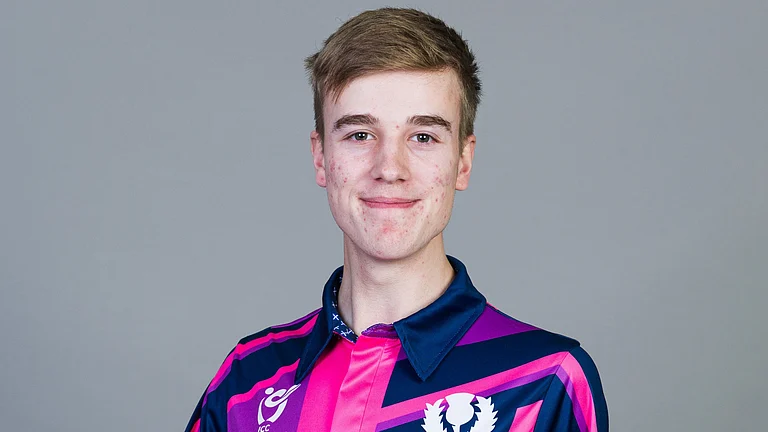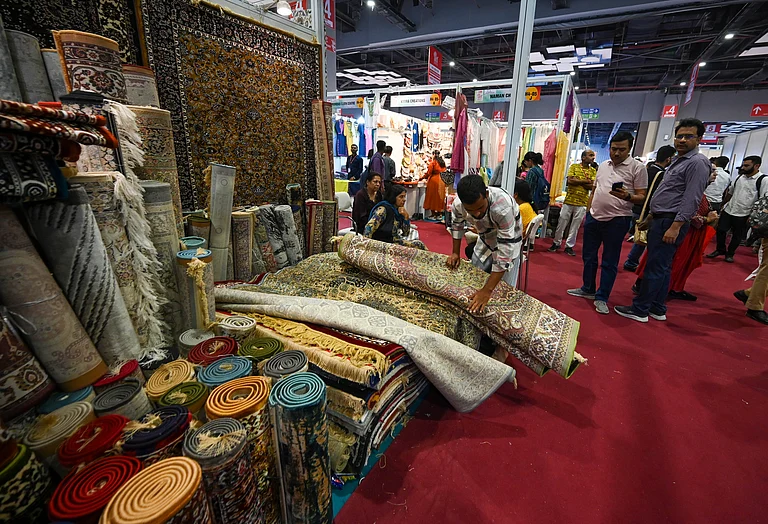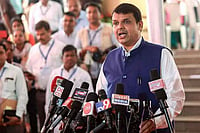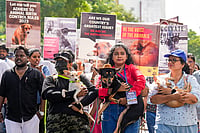The Congress party is set to get its first non-Congress chief in the last 24 years as either Mallikarjun Kharge or Shashi Tharoor is set to succeed the current party president Sonia Gandhi.
Sonia was elected as the Congress chief in 1998. Since then, the presidency has rotated between her and her son Rahul Gandhi.
Rahul was elected as the Congress president in 2017 but he resigned in 2019 after the Congress party lost the general elections that year. Sonia took over the party leadershipa again after her son Rahul resigned.
Following the drubbing in state elections earlier this years, a set of reforms were initiated in the Congress party, such as the brainstorming at Chintan Shivir and the overhaul of the party leadership.
Here we retrace the journey of Sonia as the Congress president through the years, from her election for the first time as chief in 1998 to her being the 'Super Prime Minister' during the United Progressive Alliance (UPA) government during 2004-14.
Sonia Gandhi's election as Congress President
Sonia was elected as Congress President in March 1998.
Sonia succeeded Sitram Kesri, who was unceremoniously ousted as the party chief.
Sonia was not even the primary member of the Congress party until 1997. Within the year of her becoming the party's primary member, she became its president.
Though Sonia became the party chief in 1998, she had been offered the post years earlier in 1991, the year her husband and former Prime Minister Rajiv Gandhi was assassinated. She had also been active in public years before her rise as the party chief.
"She was a companion to her mother-in-law, Smt. Indira Gandhi, during many of her official duties and frequently acted as her hostess. During the years 1984 to 1991 when her husband was Prime Minister and then briefly leader of the Opposition in the Lok Sabha, she assumed a limited public role, mostly accompanying him on his tours in the country and abroad," notes the Congress on its website.
Rediff News in 1998 reported that Sonia was also very active in the general elections at the time.
"Apart from distributing party tickets, he [Kesri] visited very few places to forward the party's cause. In contrast, Sonia made whirlwind tours of remote parts of the country and the attendance at her meetings became the envy of Opposition politicians," reported Rediff in 1998, contrasting her with the then-ousted party chief Kesri.
Rise of Congress under Sonia Gandhi
Sonia led the Congress to power in 2004 general elections, which were seen as a referendum of a politician who was often questioned and mocked for her foreign origin —Sonia was born in Italy— and her accented Hindi.
"Leading the Congress in a relentless political campaign that saw virulent personal attacks on her ranging from her antecedents to her heavily accented speeches, Gandhi braved it all as she criss-crossed the country to strike a cord with the aam aadmi (common man) who threw in his lot behind her," reported PTI in 2004.
Sonia has also been appreciated for not taking the post of prime minister for herself. Though she is also blamed for remotely running the Manmohan Singh-led UPA government. A common perception over the year was that Singh was the mere figurehead and Sonia pulled all the strings.
Sonia Gandhi as 'Super PM'
Sonia headed the National Advisory Council (NAC) for several years between 2004-14.
NAC, though envisioned to work like a think tank to advise the government, was accused to be an alternative centre of power and a 'super cabinet' headed by 'Super Prime Minister' Sonia.
There were also reports of clashes with Singh-led government as most of the NAC members were leftists.
"There is also a perception that most of NAC members belong to a left-of-centre ideology and they are in direct clash with Ahluwalia, one of the most influential policy czars in Dr Manmohan Singh's government," reported Rediff.
Files related to NAC made public years later showed that Sonia's words, despite not being part of the government, was often final in governance affairs.
Mentioning one of the many incidents, The New Indian Express reported, "On September 14, 2011, without keeping the Prime Minister in the loop, Sonia wrote to Rural Development Minister Jairam Ramesh (26011/1/2011-NAC-2988) on strengthening the natural resource management component under the MGNREGA. 'A note comprising the recommendations of the NAC are enclosed for appropriate action,' read the letter. Subsequently, Jairam replied on September 28, 2011 indicating compliance."
The fall of Congress under Sonia Gandhi
While Sonia led Congress to power in 2004 and functioned allegedly as the Super Minister, the fall of the party also happened her watch.
The Congress was reduced to 54 seats in the 2014 general elections.
Between 2014-22, the Congress lost most of the states it once held. These years also marked rising discontent against her and her style of leadership, evident with rebellions and leaders quitting party.
Most recently, Ghulam Nabi Azad, who had been with the Congress for five decades, quit the party and came down heavily on Sonia and her son Rahul. He said Sonia was merely a figurehead and Rahul was running the party with a coterie of sycophants after sidelining veteran leaders.


























